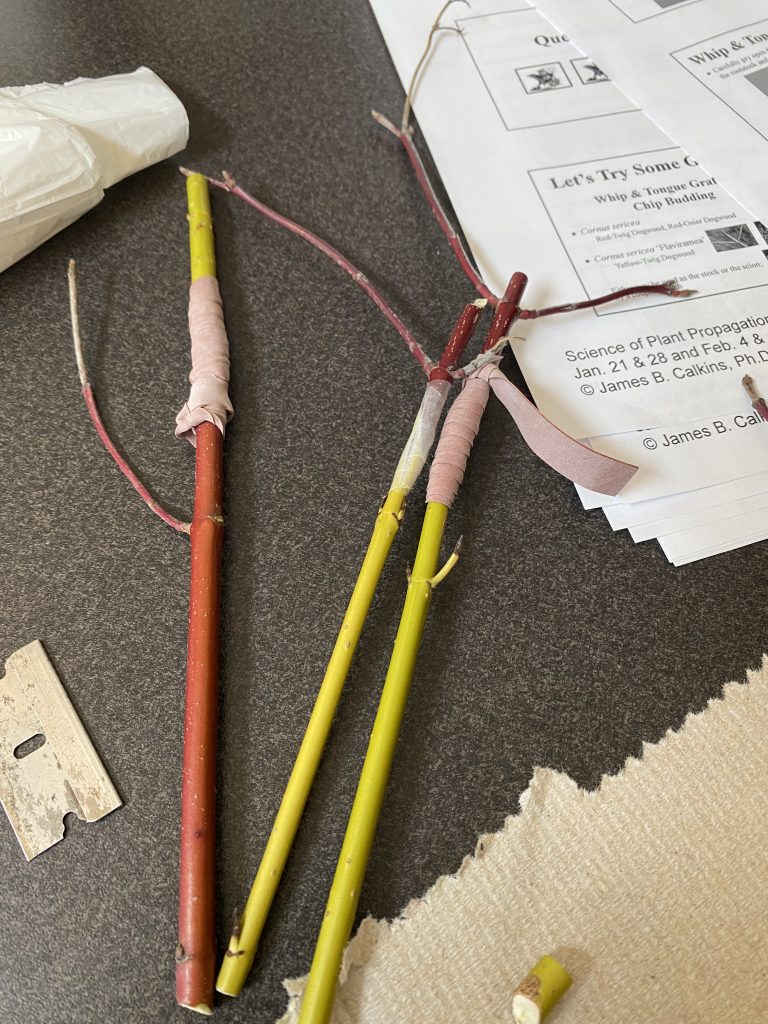
One of the things Im rather anxious to start doing at the farm is planting the orchard and vineyard. I’ve spent the last few years buying books on the various topics surrounding orchards and vineyards but if Im being honest I just haven’t taken the time to read more than a chapter out of each. As I realize that planting a vineyard ad orchard is a timely venture – both in effort and in the wait for fruit – Im keen to start learning more so that we can tackle both in the coming years. That said – I’ve started looking for classes to take on the various topics surrounding both orchards and vineyards and an interesting class on plant grafting popped up at the MN landscape arboretum. Laura and I took the class on Saturday and so I thought I’d take the time to summarize my notes and learnings into one place. While I really enjoyed the class and learned a lot it was also a good reminder that I have lots to learn.
The class we took in specific was Grafting: Science of Plant Propagation and it was taught by Dr Jim Calkins. There was apparently a whole series of classes about plant propagation covering other ways to propagate such as seed based propagation and propagation from clippings. I believe this class on grafting was the third in the series and theres another one that covers soils as well that’s typically given after the one we took. I’d be interested in taking the others some time if the opportunity came up.
The class talked through how plants can reproduce. The key takeaway for me was that apple trees aren’t true to seed. That is – if you take the seeds from a Red Delicious apple and plant them you won’t get a tree that grows Red Delicious applies. This is because apple trees need to cross pollinate and when they do that they end up growing apples that are the same variety as the tree – but the seeds in that apple will be a new variety based on the variety the tree cross pollinated with. So if you want a bunch of one kind of apple – the only way to really do it is to graft the tree you want onto an existing root stock. The piece you graft on is called the “scion” and is a piece of the existing tree you wish to clone. The root is simply referred to as “rootstock” and there are lots of kinds of rootstock that one needs to choose from. So as we look to plant the orchard in the coming years we’ll need to take both the varieties we want to plant into account as well as the rootstock the varietal would grow on.
The bulk of the class focussed on the actual process of grafting which seems rather simple but relies on you having a base understanding of how trees grow. I recall reading a book a number of years ago about harvesting lumber which covered the growth patterns of trees but I definitely needed a refresher so I spent some time reading up on it again. The main component of tree growth is the cambium which is a thin layer of cells that live underneath the trees bark. The warming of spring causes the cambium cells to start multiplying and in doing so they create new layers. The layer on the outside of cambium becomes the phloem which is responsible for carrying the sugars made by the leaves down to all living parts of the tree (branch, trunk, and roots) to supply them with food. The layer on the inside of the cambium becomes the xylem which is responsible for carrying water and nutrients from the roots up to the rest of the tree.
As the phloem and xylem layers continually add to each other we get tree growth. The phloem cells that died the previous year are pushed outward with new phloem cells taking their place. This process creates the trees outer bark. The xylem cells that get added are what form the rings on the inside of a tree trunk. The lighter rings are spring wood because there is more moisture in the spring so the cells are larger. As the moisture starts to go away into the summer the ring becomes darker as the cells become smaller. This is what gives us the distinctive rings inside the tree. Interestingly enough – the xylem layer is also called sapwood as the water and nutrients it carriers are also referred to as sap. So when you tap a maple tree to collect sap you are tapping into the xylem layer of the tree! As layers of xylem die they fill with resin and become hard at which point they join the other dead xylem layers and become known as heartwood. Heartwood is strong and is what provides the tree strength to keep growing.
In either case – as the xylem dies it fills with gum and resin and become hard. These dead layers become what is known as heartwood and is what provides strength to the tree.
Ok – so there’s your summary on how trees grow. So why does this matter when we talk about grafting? The cambium needs to align on each side of the graft in order for any of this to work. As we want the xylem and phloem to connect between the two pieces all we need to do (well not “all” but this is the big hitter!) is align the cambium layer and let it do its job. As its job is to create new phloem and xylem cells it can grow a connection between the xylem and phloem layers in the rootstock and the scion.
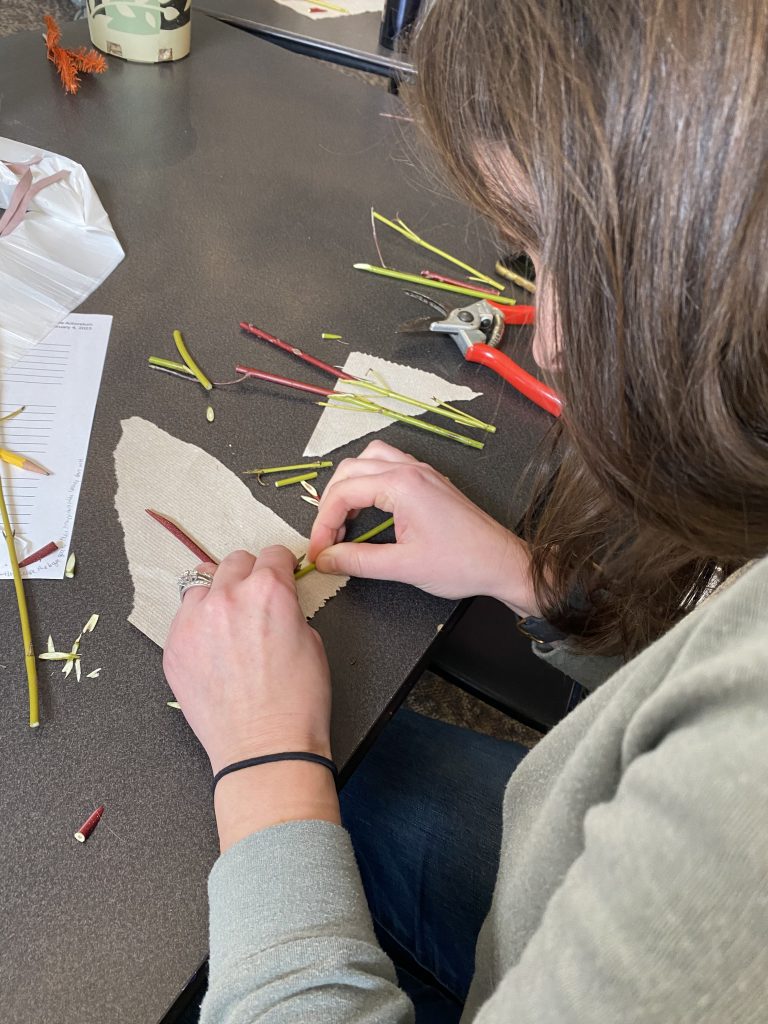
There’s clearly a lot more to grafting but this was enough for me to connect most of the dots. At the end of the class we had the opportunity to try grafting a dog wood tree which was an interesting and eye opening experience. You really had to focus on lining up the two piece to make sure the cambium in each piece was aligned. Time will tell if our grafts will be successful but it was certainly good experience for us. Still lots to learn and I need to read more about budding since that’s a slightly different form of grafting which we touched on but didn’t get a chance to do.
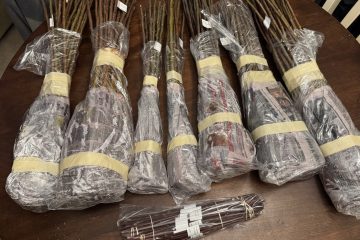
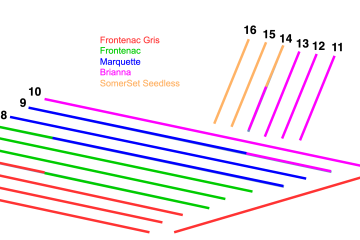
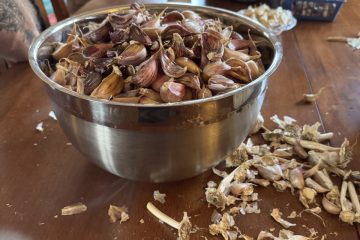
1 Comment
Another Grafting Class – Birch Bend Farm · March 19, 2023 at 2:32 pm
[…] Laura and I had already taken a grafting class at the MN arboretum, I was curious to get more experience so I signed up for a class at Albrecht’s Nursery in […]